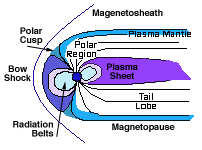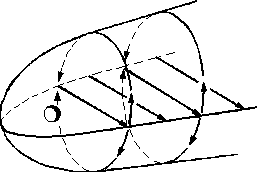
|
The magnetotail is also the main source of the polar aurora. Even before the space age observers noted that in the arctic winter, when the sky was dark much of the time, the brightest auroras were seen in the hours around midnight. It was widely believed then that auroral electrons came from the Sun, and the fact that aurora seemed concentrated on the side facing away from the Sun puzzled everyone. Those observations made much more sense after satellites discovered and mapped the magnetosphere's long tail. |



